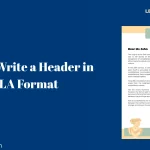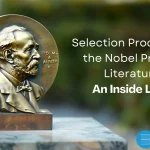- Introduction
- Exploring the Rich Tapestry of English Literature
- Evolution of English Literature: From Classic to Contemporary
- Key Themes and Movements in English Literature
- Influential Figures in English Literary Canon
- Revealing the Diversity of Genres in English Literature
- Analyzing Symbolism and Imagery in English Literary Works
- Regional Influences: English Literature Across Geographical Boundaries
- Interdisciplinary Connections: English Literature and Other Arts
- English Literature’s Impact on the Formation of Cultural Identity
- Critiquing and Contextualizing English Literary Criticism
- Conclusion
Read Tea, Rain & Self-Publishing: A Guide to UK Authors
Introduction
English literature stands as a testament to the depth and diversity of human creativity, spanning centuries and encompassing a myriad of genres, styles, and voices.
From the timeless works of William Shakespeare to the contemporary masterpieces of authors like J.K. Rowling, the landscape of English novels is rich and varied, offering a treasure trove of exploration for avid readers and scholars alike.
In this article, we embark on a journey through the vast terrain of English literature, navigating its intricate pathways, and uncovering its hidden gems.
Exploring the Rich Tapestry of English Literature
Exploring the rich tapestry of English literature is akin to embarking on a journey through time, culture, and imagination.
It is a journey that traverses the majestic landscapes of poetic verses, the intricate labyrinths of narrative prose, and the profound depths of philosophical inquiry.
From the epic tales of heroism and adventure to the intimate reflections on human emotions and experiences, English literature weaves together a diverse array of voices and perspectives, offering a kaleidoscopic view of the human condition. It invites readers to delve into the complexities of existence, to ponder life’s myriad mysteries, and to discover the profound beauty of the written word.
Evolution of English Literature: From Classic to Contemporary
The evolution of English literature spans centuries, traversing through diverse periods and movements that have shaped its rich tapestry.
From the classical elegance of Shakespearean sonnets to the experimental prose of modernist writers like Virginia Woolf, English literature has undergone a profound transformation.
Each era brings forth its unique styles, themes, and ideologies, reflecting the evolving societal norms and cultural paradigms. Through the transition from classic to contemporary, English literature continues to push boundaries, challenge conventions, and offer fresh insights into the human experience, illustrating its enduring relevance and dynamic nature in the ever-changing landscape of literary expression.
Key Themes and Movements in English Literature
Key themes and movements in English literature english novels encompass a wide spectrum of ideas and artistic expressions that have shaped the course of literary history.
From the exploration of love, power, and identity to the examination of societal structures and human nature, these themes resonate across time and space, reflecting the evolving concerns and values of society.
Movements such as Romanticism, Modernism, and Postcolonialism have each brought their unique perspectives and techniques to the forefront, challenging traditional literary conventions and pushing the boundaries of creative expression. Together, these themes and movements form a rich tapestry of literary exploration, inviting readers to delve deeper into the complexities of the human experience.
You may also read: The Digital Frontier – How Technology is Reshaping the Literary World
Influential Figures in English Literary Canon
Influential Figures in the English Literary Canon span across centuries, leaving an indelible mark on the landscape of literature.
From the timeless insights of William Shakespeare to the revolutionary prose of Virginia Woolf, these figures have shaped the course of literary history.
Shakespeare’s unparalleled mastery of language and universal themes continues to resonate with audiences worldwide. Jane Austen’s keen observations of society and human nature in her novels have cemented her status as a literary icon.
Meanwhile, the introspective works of T.S. Eliot challenge readers to delve deeper into the complexities of the human psyche. These influential figures not only reflect the cultural milieu of their time but also transcend it, inspiring generations of writers and readers alike.
Revealing the Diversity of Genres in English Literature
English literature is renowned for its rich tapestry of genres, each offering a unique lens through which to explore the human experience. From the timeless elegance of poetry to the gripping narratives of fiction, English literature encompasses a diverse array of genres that cater to a wide range of tastes and sensibilities.
Whatever a reader may be drawn to in English literature—whether it is the lyrical beauty of romantic poetry, the thought-provoking ideas of dystopian fiction, or the compelling narrative of historical novels—there is bound to be something for them to discover and savor.
Analyzing Symbolism and Imagery in English Literary Works
Analyzing symbolism and imagery in English literary works provides a fascinating lens through which to delve into the deeper layers of meaning within texts.
From the striking visual imagery of nature in William Wordsworth’s romantic poetry to the symbolic use of the green light in F. Scott Fitzgerald’s “The Great Gatsby,” these literary devices serve as powerful tools for conveying themes, emotions, and social commentary.
By dissecting and interpreting these symbols and images, readers gain insight into the intricate tapestry of human experience and the complex interplay between language, culture, and imagination within the realm of English literature.
You may also like: Marketing Strategies for Today’s Self-Published Authors
Regional Influences: English Literature Across Geographical Boundaries
English literature transcends geographical boundaries, absorbing and reflecting a diverse range of regional influences.
From the lush landscapes of rural England depicted in the works of Thomas Hardy to the bustling streets of Victorian London brought to life by Charles Dickens, geographical settings play a pivotal role in shaping the narratives and characters of English literature books.
Furthermore, the global reach of English as a language has led to the emergence of voices from diverse cultures and backgrounds, enriching the literary landscape with a tapestry of perspectives and experiences. Whether set in the rolling hills of Yorkshire or the bustling metropolis of New York City, English literature embraces the myriad complexities of human existence across geographical boundaries.
Interdisciplinary Connections: English Literature and Other Arts
English literature thrives on its connections with other art forms. Visual art inspires ekphrastic poems, where writers paint vivid pictures with words in response to paintings or sculptures.
Music soundtracks the emotional journeys of characters, while theatrical adaptations breathe life into literary works. Literature itself can be a springboard for artistic creation, influencing film scores, choreography, and the settings of operas.
This rich interplay between English literature and other arts allows readers to experience stories in multifaceted ways, deepening their understanding and appreciation of both.
English Literature's Impact on the Formation of Cultural Identity
English literature has played a pivotal role in shaping and defining cultural identity across the globe.
Through its rich tapestry of narratives, characters, and themes, English literature provides a lens through which individuals and communities can explore and understand their own cultural heritage and identity.
From the exploration of national identity in works like Charles Dickens’ “Great Expectations” to the examination of postcolonial identity in novels such as Chinua Achebe’s “Things Fall Apart,” English literature offers a mirror reflecting the complexities and nuances of cultural identity.
By engaging with diverse voices and perspectives, English literature facilitates a deeper understanding and appreciation of the cultural mosaic that defines our world.
Critiquing and Contextualizing English Literary Criticism
Critiquing and contextualizing English literary criticism involves delving into the intricate layers of interpretation and analysis that underpin the study of literature.
It entails examining not only the text itself but also the historical, cultural, and theoretical contexts in which it was produced.
This process allows scholars to evaluate the effectiveness of different critical approaches and methodologies in uncovering the deeper meanings and implications embedded within literary works.
By engaging in critical dialogue and debate, scholars can contribute to the ongoing evolution of English literary criticism, enriching our understanding of literature and its broader socio-cultural significance.
You may also like: Challenges and Opportunities in Modern Book Distribution
Conclusion
In conclusion, navigating the literary landscapes of English literature is a journey of discovery and enlightenment, offering insights into the human condition and the world we inhabit.
From its rich tapestry of themes and movements to its diverse array of genres and voices, English novels continues to captivate and inspire readers across the globe, inviting us to explore its infinite possibilities and complexities.
As we navigate this vast terrain, let us embrace the beauty and complexity of English literature, celebrating its enduring legacy and significance in our lives.















